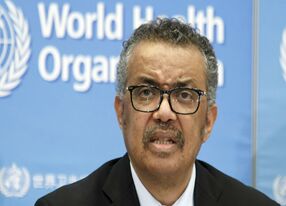解除或放松疫情限制措施需考虑这6项标准
|
As some countries experience declines in COVID-19 cases and deaths, their leaders and citizens are eager to get back to work, school, and play. But restrictions need to be lifted slowly and strategically in order to successfully re-enter a new normal rather than lead to waves of lockdowns in the future, the World Health Organization's leaders said during a World Health Organization press briefing April 13. WHO Director General Tedros Adhanom Ghebreyesus said that "while COVID-19 accelerates very fast, it decelerates much more slowly."
"In other words, the way down is much slower than the way up," he said. "That means control measures must be lifted slowly, and with control. It cannot happen all at once." Tedros announced new strategic advice for countries thinking about relaxing mitigation measures. The six criteria are: 1 Transmission is controlled. 2 Health system capacities are in place to detect, test, isolate and treat every case and trace every contact. 3 Outbreak risks are minimized in special settings like health facilities and nursing homes. 4 Preventive measures are in place in workplaces, schools and other places where it's essential for people to go. 5 Importation risks can be managed. 6 Communities are fully educated, engaged and empowered to adjust to the new normal. "Every country should be implementing a comprehensive set of measures to slow down transmission and save lives with the aim of reaching a steady state of low level or no transmission," Tedros said. Tedros also discussed low-income countries in Africa, Asia, and Latin America that are looking at whether to implement restrictions. "In countries with large poor populations, the stay-at-home orders and other restrictions used in some high-income countries may not be practical," he said, because residents may be living in crowded quarters, need to work to survive, may need to go to school to receive meals and, in some cases, escape abuse. "Physical distancing restrictions are only part of the equation, and there are many other basic public health measures that need to be put in place," he said. "When stay-at-home measures are used, they must not be at the expense of human rights." "Each government must assess their situation," he added, "while protecting all their citizens and especially the most vulnerable." Meanwhile, President Donald Trump claimed that he – not governors – has the authority to reopen the US. "It is the decision of the President, and for many good reasons," Trump tweeted. "With that being said, the Administration and I are working closely with the Governors, and this will continue. A decision by me, in conjunction with the Governors and input from others, will be made shortly!" While Trump has talked of reopening the country, there is no national quarantine order. The federal government has released social distancing guidelines, but it is states and localities that have established various stay at home orders. The president has demonstrated he is itching to get the US economy up and running again, but health experts have said it is too soon to name a date because the US is only just now nearing its peak. However, Trump said he is forming a task force dedicated to "opening our country." |









